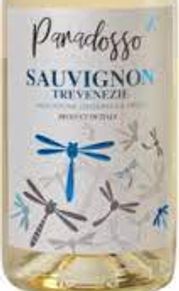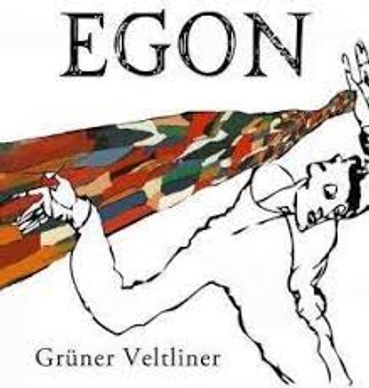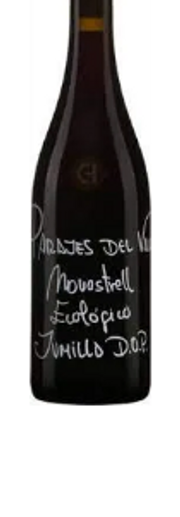Featured wines of the month
Wine of the Month Club
Many of you are already familiar with our very popular Wines of the Month Club. Below are some of the wines we have recently selected for our members. Typically a mixed half case of three white and three red. The wines are discounted, and each one has been tasted an approved by us, here at the store. It costs nothing to join, and you have a choice of all red, all white, or the combo (which most people select.) Call us anytime to join. You can sign up for 3, 6, or 12 months.
WHITE Selections: Lafage Cote Est Blanc

Flavorful blend of Grenache, Chardonnay, and Rolle. Rolle is the French word for Vermentino. Dry, medium body, and a perfect reflection of the three grapes that comprise it. They work in concert to deliver an aromatic and soft white meant to be enjoyed with light pasta dishes, eggs/omelets/quiche; cheeses, and vegetarian dishes, and fish. Green apples, pears, apricots, honey, a bit of minerality, and yes, some citrus. Sante’!
Tokoeka, Sauvignon Blanc, Marlborough, New Zealand

Typical of the region – grapefruit, passion-fruit, melon, pear, and other tropical fruit notes with a nice acidity and long finish, you’ll appreciate this Sauvignon Blanc with seafood, fish, salads, and as a terrific aperitif on its own.
Gayda, Flying Solo

Gayda, Flying Solo, Languedoc Roussillon, France
This lovely blend of Grenache Blanc and Viognier is complex, aromatic, and fruity, but is still dry enough that it will go with all foods. The aroma of white fruit and citrus on the nose and mouth makes it a very gourmet wine; round, with a nice freshness. Peach, green apple, honey, citrus, minerality, and some stone give this wine a beautiful balance. Pairs well with appetizers, fish, vegetarian, pasta, and poultry.
Pilandro "Tere Crea" Lugana

The grape – Trebbiano. There’s a slight minerality about this, and on the nose you’ll detect peach, apple, pear and maybe a little honey or pineapple (if you really concentrate.) Pasta pairs well with it, as does shellfish. You’ll also appreciate it with mature and hard cheeses, and again, the antipasto. Slightly acidic and fruity, you’ll appreciate the complexity of this wine as soon as you pop the cork.
Parajes del Valle Macabeo

The grape, Macabeo, is a white skinned gem, also known as Viura. It’s used mostly used to make mildly acidic and young white wines mostly suitable for early consumption or blending with other varieties both red and white. This one has notes of citrus, peaches, apricot, and honey. Clearly, it’s meant for lighter fare, salads, soft cheeses, and simple fish dishes.
Domaine Des Loges Sauvignon Blanc, Touraine, France

This Loire Valley gem is a terrific representation of its terroir -- and its long finish is a perfect touch for lighter fare. Zesty citrus and Granny Smith apples come to mind. Fish and seafood; unaged cheeses, and omelets would be perfect to accompany Des Loges, as would a glass, and nothing else.
Bodegas Shaya Verdejo, Rueda, Spain

Old vines. ORGANIC! The Verdejo is fragrant, promising a bouquet of citrus, green apple, and floral notes. On the palate, it is crisp and refreshing, with flavors of lemon zest, white peach, and a hint of minerality. It’s bright, and a perfect match for lighter fare; salads, ravioli with butter and sage, for example, or crustaceans and chicken.
RED Selections: Chateau Cazerac, Malbec, Cahors, France
RED Selections: Chateau Cazerac, Malbec, Cahors, France
Yes, before you tsk tsk “French” Malbec, remember that the grapes originated in France, and an enterprising vigneron from Argentina adopted them. This wine is the perfect expression of Malbec with notes of blackberries, black currant, and plums, and some distinctive flavors evoking tobacco, chocolate, oak and leather. There is some nice minerality/earthiness present, and so it is perfectly paired with beef, lamb, and aromatic poultry (not chicken Milanese). It’s ready for drinking now, and the soft finish will convince you that the French really do know what they’re doing.
Amonte Barbera Piemonte, Italy
Ambra Fattoria Carmignano, Super Tuscan, Italy
RED Selections: Chateau Cazerac, Malbec, Cahors, France
Pale ruby color, and the notes are cassis, strawberry, and plum. Somewhat acidic, the barbera grape is lighter with medium tannins (in this vintage, especially) and well balanced and very uncomplicated. Drink it, don’t store it. You might also detect a note or two of clove and cinnamon. Have this with your hot antipasto, or the main course. Pasta. Veal. Pork.
Ambra Fattoria Carmignano, Super Tuscan, Italy
Ambra Fattoria Carmignano, Super Tuscan, Italy
Ambra Fattoria Carmignano, Super Tuscan, Italy

This big blend of Sangiovese, Cabernet Sauvignon, and other regional varietals, is aromatic with intense cherry and delicate spices on the nose. Taste-wise, it delivers earthy spices and sour cherries. Complexity and a long finish are identifying characteristics of the Carmignano, and make it the perfect wine for red ragu sauces; pizza, ravioli, in short, anything Italian.
Lurbira Grenache Tinto, Navarra, Spain
Ambra Fattoria Carmignano, Super Tuscan, Italy
Ambra Fattoria Carmignano, Super Tuscan, Italy

It’s big, dry, smooth, and well balanced. This beauty means business. Earthy, mushroomy, leathery, redolent with deep red and dark fruit. Cherries, raspberries, blueberries, and blackberries come to the front in a wine that begs for food, and wants beef, lamb, and poultry by its side. Pastas too – if red sauced, or ragu-topped. Beef stew, or a steak? Absolutely.
Featured wines of the month
Septima Cabernet Sauvignon, Mendoza, Argentina
Septima Cabernet Sauvignon, Mendoza, Argentina

Another nicely balanced, not too bold, not too tannic Argentine wine that is drier than fruitier in the Cab world. Red meats, pork roast, slow braised dishes are perfect here. It has a long finish and you might notice black currant, nutmeg, and perhaps a hint of green pepper, all rounding out a hearty wine. Sure, have it by itself, but it will also stand up to any meaty dish.
Casata Monticello, Dolcetto D’Asti, Piedmont, Italy
Septima Cabernet Sauvignon, Mendoza, Argentina

Think deep foods. Red sauce pasta, beef, lamb. Ragu. No, not the stuff in the jar. Make a vat of Bolognese (ragu) and enjoy it with this. Some pomegranate and cherries on the nose; leather and chocolate on the palate, but not at all like the Gucci loafers you wish you hadn’t tossed last year; and the finish has plum and blackberry notes. A little spicy with low tannins, it’s smooth and well balanced.
Chemin des Anges Chinon, Loire Valley, France

This beauty is 100% Cabernet Franc so it’s less gigantic than Cabernet Sauvignon. It thrives in sandy, chalk soils, and in Bordeaux, plantings of Cabernet Franc are treated as an "insurance policy" against inclement weather close to harvest may damage plantings of Cabernet Sauvignon. The wine is fresh, elegant and refined, with soft, fruity, notes of blackcurrant and spice. Well balanced, it leaves you with an elegant finish. Pair it with poultry, pork, grilled red meat, and hard cheeses. Swiss, cheddar, and aged gouda come to mind.
Reverdy Sauvignon Blanc, Charmes de Loire, France

Soft. Some minerality. A little citrus, green apple, and pear. You might detect some grapefruit which is not typical of French sauv blancs. It’s a wonderful taste sensation that truly accompanies all, including red meat. Trivia: The grapes are sourced 75% from the Sancerre district, and 25% outside, so technically, well, it’s “not” a Sancerre, but close.
Paradosso Sauvignon Blanc

Melons. Pears. And maybe a plum. Another Sauvignon Blanc for you to contrast with the above. This one is 100% Sauvignon, so of course, it will be a bit more crisp than the Bordeaux above. Because of the zip this wine delivers, it’s perfect with mature and hard cheeses; cured meats, shellfish, and pasta dishes (creamy sauces, maybe a little garlic)
Milcampos Ribera del Duero

Bold. Tannic. Dry. Acidic. It’s a wonderful red to enjoy with barbeque and red meats in general. Flavor profile? Oak, tobacco, vanilla, cherries, and blackberries. Get it to the sweet spot in temperature – hovering in the 60-65 degree vicinity for the bloom to really hit.
Fuchs Gruner Veltliner
RED Selections: Fog & Light Cabernet Sauvignon, Monterey, California

This spectacular wine is one of our favorites. It's a glass of fresh grass. You can taste the hay, the air, the Austrian soil. Gruner is the most prolific grape variety in Austria, and the vinification speaks volumes for how much the Austrians revere it. Pair it with fresh young cheeses, shrimp, stuffed grape leaves or falafel. Consider it with veal, chicken, or pork cutlets that you've doused with a squeeze of lemon.
RED Selections: Fog & Light Cabernet Sauvignon, Monterey, California
RED Selections: Fog & Light Cabernet Sauvignon, Monterey, California

Bold, somewhat tannic, and dry, with a well-balanced acidity that won’t make you pucker. Cherries, cranberries, some oak, chocolate, vanilla, and maybe a little graphite. (I know. Unless you’ve licked your pencil you have no idea what graphite tastes like. Well, it softens things.) Pair this gem with beef, lamb, poultry, and big pork (like pulled, or a stew.) It’s rich, and flavorful without being a big bottle of pushy fruit.
Parajes des Valle Monastrell

100% organic. Cherry, raspberry, plum, blackberry, licorice, pepper, cinnamon. Yeah. All of that. In this beautifully balanced entry from Spain. It’s a big wine that demands your attention and a meal. Beef, lamb, meaty pasta dishes, and those that include tomatoes. And with all reds, remember to get the temperature to about 60-65 degrees for optimum pleasure on your taste buds.
Klinker Brick "Brickmason" Red Blend

Zinfandel, Syrah, Petite Sirah, Cabernet Sauvignon. Big. Dry. Acidic. Everything you’d expect from a California blend. It’s 80% Zin, so it really needs a meal – all the usual suspects including poultry. On the palate? Oak, vanilla, tobacco, red fruits – cherries and raspberries. It opens to a perfect expression of its grapes if you let it air for 15 minutes or so.
Clos de Oro Malbec Reserva

This medium bodied red has light tannins and is reminiscent of dried fruits - plums, raisins - with some honest red intensity. It's aged in French oak for 1 year and has a long finish. It's richer than most Malbecs and will deliver a decidely different profile from what you might be used to. Remember that Malbec first started in France, where it is used grown and used in Bordeaux, but it has become the "national grape" of Argentina. This particular bottling is elegant, but big.
Many of you are already familiar with our very popular Wines of the Month Club. Below are the wines we packed for our members – this was the mixed half case of three white and three reds. The wines are discounted, and each one has been tasted an approved by us, here at the store. It costs nothing to join, and you have a choice of all red, all white, or the combo (which most people select.) Call us anytime to join. You can sign up for 3, 6, or 12 months.
